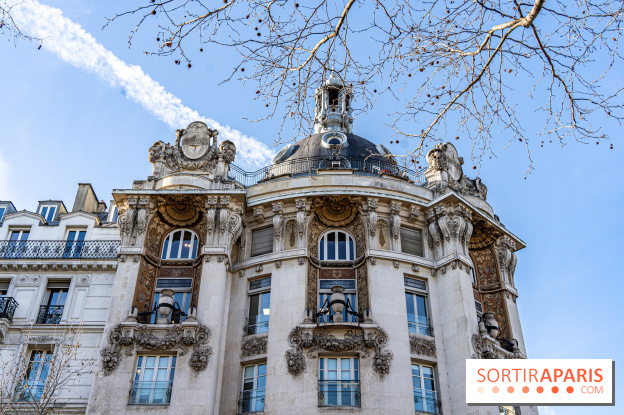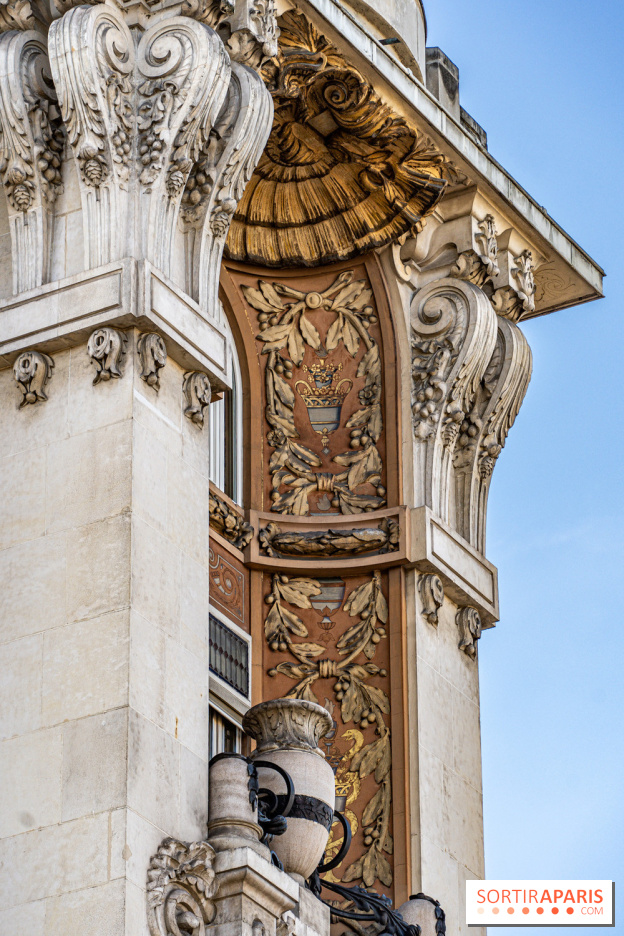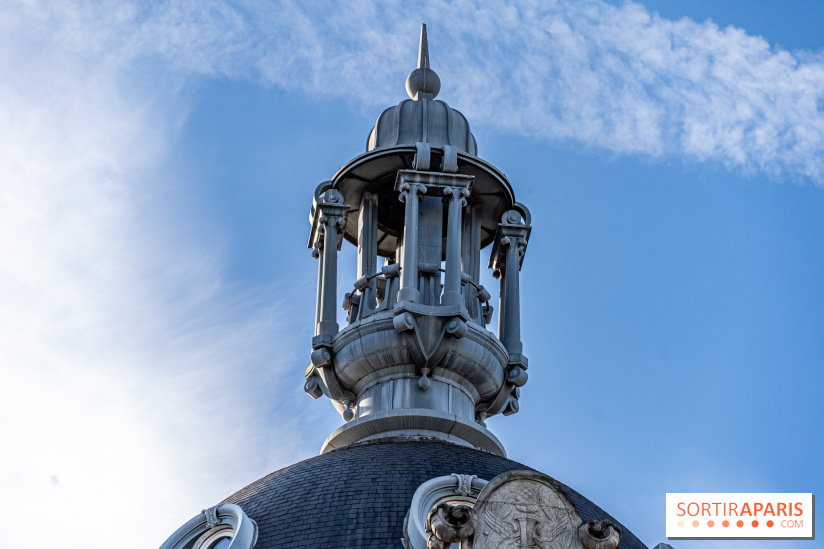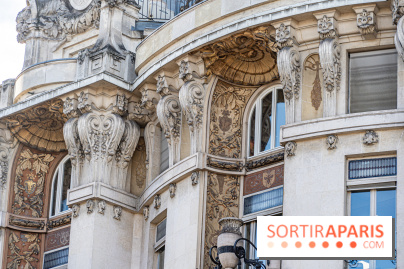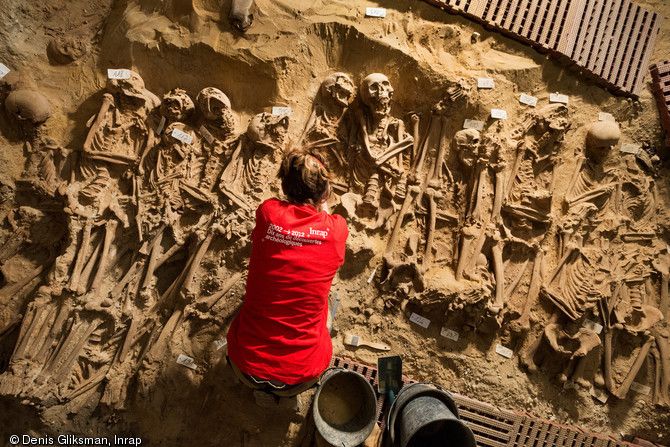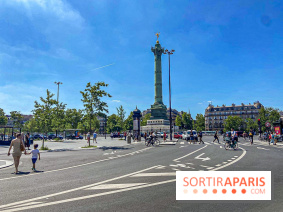The story of Félix Potin de Réaumur in Paris is a fascinating tale of commerce, architecture and historical mystery. Félix Potin, born in 1820, began his career as a grocery clerk before opening his own grocery store in 1844 in Paris's 9th arrondissement. This first step into the world of commerce laid the foundations for a company that would become emblematic of the French capital.
In 1860, marking a significant expansion, Félix Potin opened a new store on boulevard de Sébastopol, at the corner of rue Réaumur. This strategic address, chosen for its location on the new Haussmannian thoroughfares and close to the Halles de Baltard, testifies to Potin's keen business sense. The Sébastopol store, with its imposing architecture and diversified offer, quickly became a landmark in the Parisian commercial landscape.



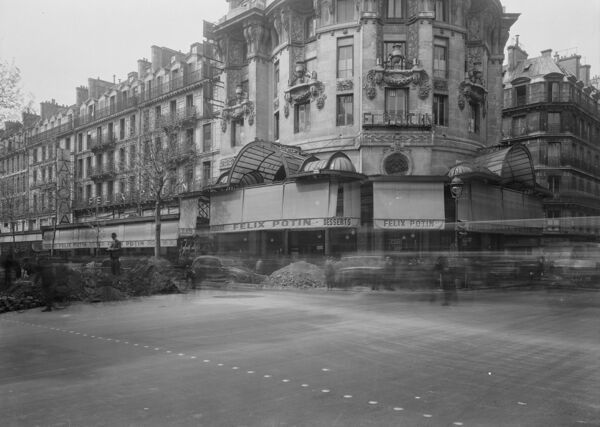
The boulevard Sébastopol store, rebuilt in 1910, embodies the apogee of Maison Félix Potin. At the time, the company had several branches in and around Paris, each employing hundreds of clerks. The building, designed by architect Charles Lemaresquier in a neo-baroque style, is distinguished by its grandeur and opulence, reflecting the company's prosperity.
This former flagship store, now a Monoprix, was designed by architect Charles Lemaresquier in a striking neo-baroque style. The facade of this historic building is a veritable visual spectacle. The lower part of the building, although modified, retains its eclectic, ornate elevations, testifying to the structure's former splendor. Nicknamed"la Poivrière" for its exuberant corner rotunda topped by a large dome, the building reflects the pomp and prosperity of Félix Potin's stores in their heyday.
The façade combines classical iconography withmythological elements and idealized representations. It features brackets decorated with horns of plenty, garlands of fruit, vases, consoles with foliage motifs, and the caduceus, symbol of Hermes, god of commerce. The colorful paintings in the decor add a touch of fantasy to the cut stone. Neo-Baroque curves and relief carvings accentuate the sumptuously lush character of the whole.
The closure of Félix Potin took place in several phases, marked by significant changes in the company's management and strategy. After the death of its founder in 1871, the brand expanded under the management of his widow and children. However, from 1924 onwards, a period of uncertainty set in with the second generation of heirs. The decline began in 1945, when the third generation took the reins without much personal interest, leading to the company's sale. Finally, faced with increasing competition in the supermarket sector, the Félix Potin brand disappeared in 1995.
The surprise came in 2015 during renovation work on the Monoprix that now occupies the space. The workmen came across a macabre discovery: hundreds of skeletons neatly lined up in a mass grave. This surprising discovery is not an isolated case in a city as old as Paris, but it has caused quite a stir nonetheless.
Extensive research revealed that these human remains probably date back to the Middle Ages. The site, once the cemetery of the Hôpital de la Trinité, has revealed strata of human bones on several levels, possibly deposited following an epidemic.
The cemetery of the Hôpital de la Trinité, established in the 12th century and destroyed towards the end of the 18th century, was located in the neighborhood of Rue Saint-Denis, Rue Greneta, Rue Guérin-Boisseau and Boulevard de Sébastopol in Paris. Opened in 1348 during the Great Plague, this cemetery was a response to the inadequacy of the Cimetière des Innocents to accommodate the large number of bodies coming mainly from the Hôtel-Dieu hospital. Capable of holding up to 600 corpses in each of its large pits, it was also used during other tragic periods, notably the massacre of the Armagnacs in 1418, and the plague epidemics of 1428 and 1466.
Over time, use of the Trinité cemetery declined, leading to its total disuse in 1678. Excavations carried out by France's Institut national de recherches archéologiques préventives (Inrap) revealed that not all remains had been moved to the Catacombs, leaving a number of undumped pits on the site. This research revealed an organized arrangement of bodies, with at least two rows arranged head to tail, and a third row outside the boundaries of the excavation.
This discovery, showing bodies stacked on five to six levels with no sign of trauma, suggests that the mass death was probably due to an epidemic rather than a massacre. The Rue Réaumur Monoprix thus opened for several years with a veritable open-heart cemetery in its basements, did you know?
References
Location
Monoprix Réaumur-Sébastobol, former headquarters of Félix Potin
51 Rue Réaumur
75002 Paris 2
Prices
Free

